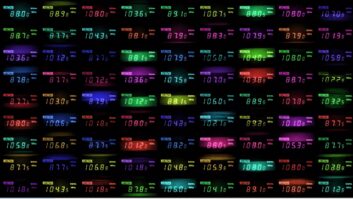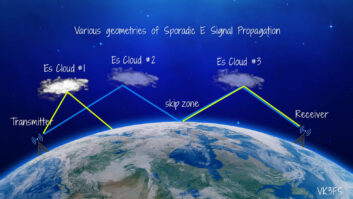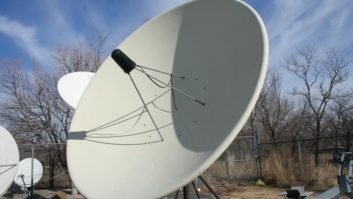
©iStock/sefaoncul The Broadcast Maximization Committee plan to expand the FM band (“Could Radio Use Channels 5 & 6,” Oct. 8) has merit; however, some suggestions are in order:
- Why the obsession with digital transmission? Adding yet another expensive proprietary digital scheme to what we already have is guaranteed to prevent the public from buying the receivers, as it will drive the price up. Do we need another electronic Edsel?
The simplest solution is to maintain the current FM technical standards on the expanded band, using 200 kHz channels (including a guard band) and allowing stations to transmit standard analog FM or hybrid digital using the iBiquity HD Radio system and/or FMeXtra. An inexpensive RF converter is all that existing radios would need for the expanded band. Such converters are already available in Asia and Eastern Europe, allowing older radios to tune the 88–108 MHz band as well as the Japanese or OIRT bands. Since the Japanese have been using 76–90 MHz for years and the OIRT countries (Russia, Poland, etc.) have used 65.8–74 MHz for FM, newer radios would only need a firmware update or selection of jumpers to cover the proposed expanded band. Many car radios made for the Asian market already include both the Japanese and CCIR FM bands, covering 76–90 and 88–108 MHz in two bands.
- The first AM stations that should be offered the opportunity to move to the new band should be the ones broadcasting on the old Class IV local channels. Those channels become a cacophony of interference when the sun sets. Class B and D stations should be then be allowed to move to available FM channels. The 50 kW Class A AM stations should stay put, but be allowed to increase their power to provide a wide-area service. Weeding out the lower-power AM stations would do a lot to clean up the band. Eliminating AM IBOC would also help, unless the AM band could be refarmed into 30 kHz channels. A difference from the current Canadian plan of allowing AM stations to migrate to FM is that any AM frequencies relinquished by U.S. stations should remain vacant, with no new stations being allowed to apply for those frequencies in the same market.
- The existing FM band can also accommodate relocated AM stations in some of the less densely populated areas of the country. To relieve congestion, FM translators should be phased out. No new translator licenses should be issued and no existing ones should be renewed, allowing that service to “sunset.”
Translators may have made sense in the 1950s, when there were relatively few FM stations on the air and when the performance of many FM receivers left much to be desired. Today, these stations provide nothing but clutter and interference and they are multiplying like cockroaches in a city tenement.
The worst abusers of the FM service are the noncommercial translators that use satellite feeds to rebroadcast stations hundreds of miles away. Is there any good reason why Scranton, Pa., needs a translator rebroadcasting KEAR from Oakland, Calif., via satellite when comparable religious programming is available from no fewer than four local stations in the market? Frequencies vacated by translators may be able to be used for relocated AM stations or for local noncommercial stations.
- Instead of creating a complicated new system of power classes in the expanded FM band, just keep the existing classes. Distance separations will have to be observed and consideration must be given to IF beats and image response. Pairs of channels 10.6 MHz from each other would be taboo in the same market.
- Isn’t it time to do away with that antiquated designation of FM frequencies by channel number? Who, other than FCC bureaucrats and the engineers who prepare applications for FM construction permits, ever refers to an FM channel number? If I want to listen to WBHT, I tune to 97.1 MHz, not to “Channel 246.” Why carry this practice to the expanded band?
- If any channels in the expanded band are reserved for local governmental use and weather alerts, they should be the first two channels, 76.1 and 76.3 MHz. Alternating these channels and restricting the ERP of such stations according to the demand for these frequencies would allow uniform coverage throughout the country. A special PTY code in the RDS system would allow radios to automatically tune to these stations in the event of an emergency.
- Further expansion of FM broadcasting could use the OIRT band, which roughly corresponds to TV Channel 4 (66–72 MHz) in North America. Again, IF beats and receiver image response will have to be considered when frequencies are allocated. The low VHF TV band has proven to be unsuitable for 8VSB digital television, due to its susceptibility to electrical noise, skip interference, and interference from other radio services.
Expanding the FM band is a great idea … but keep it simple!
The author, a broadcast engineer since 1972, works for a cluster in the Scranton area. Amateur radio operator K2PG, he also holds experimental station licenses KA2XUK (long-wave communications) and WE2XTT (600 meters).







